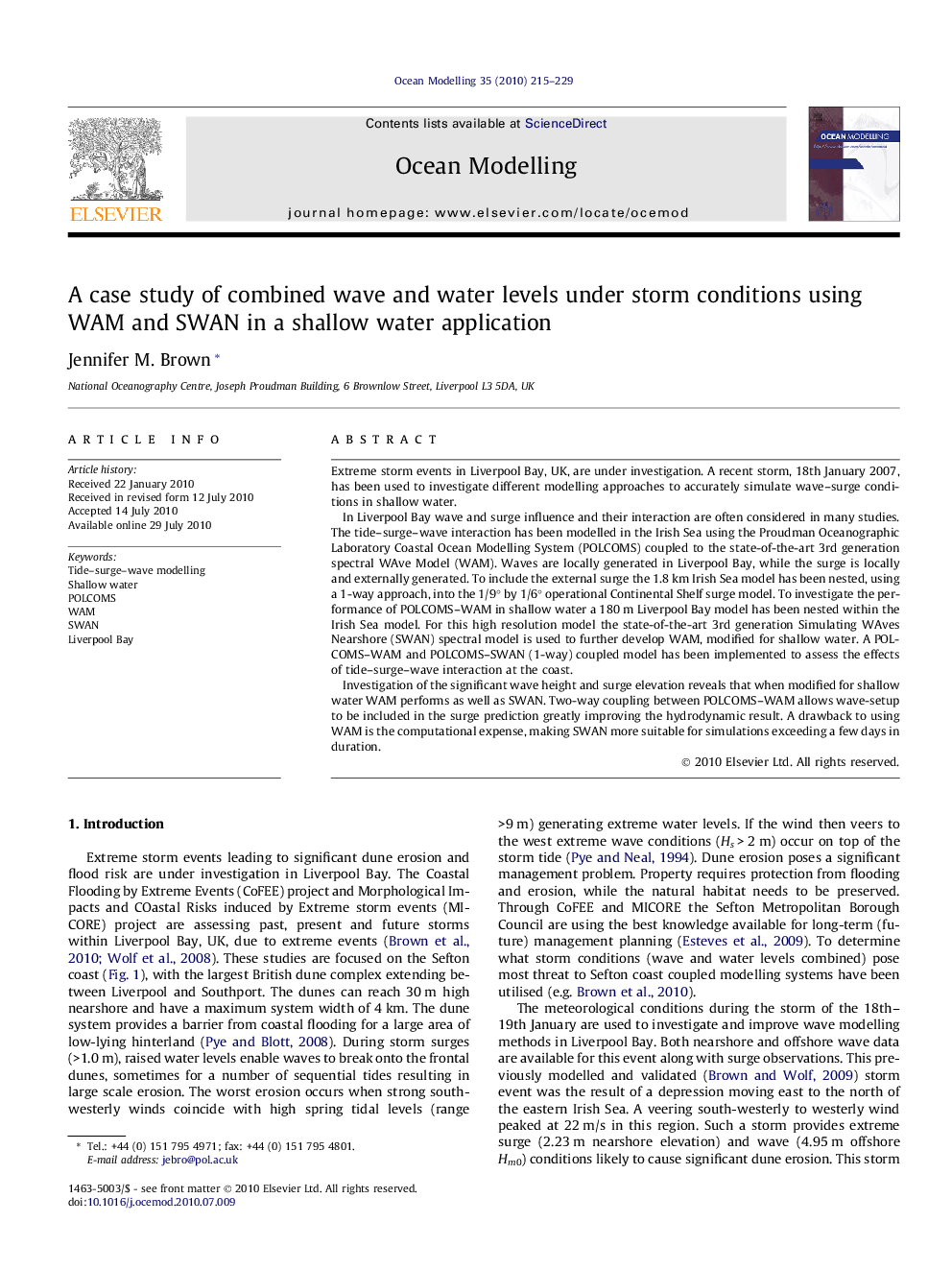| Article ID | Journal | Published Year | Pages | File Type |
|---|---|---|---|---|
| 4552366 | Ocean Modelling | 2010 | 15 Pages |
Extreme storm events in Liverpool Bay, UK, are under investigation. A recent storm, 18th January 2007, has been used to investigate different modelling approaches to accurately simulate wave–surge conditions in shallow water.In Liverpool Bay wave and surge influence and their interaction are often considered in many studies. The tide–surge–wave interaction has been modelled in the Irish Sea using the Proudman Oceanographic Laboratory Coastal Ocean Modelling System (POLCOMS) coupled to the state-of-the-art 3rd generation spectral WAve Model (WAM). Waves are locally generated in Liverpool Bay, while the surge is locally and externally generated. To include the external surge the 1.8 km Irish Sea model has been nested, using a 1-way approach, into the 1/9° by 1/6° operational Continental Shelf surge model. To investigate the performance of POLCOMS–WAM in shallow water a 180 m Liverpool Bay model has been nested within the Irish Sea model. For this high resolution model the state-of-the-art 3rd generation Simulating WAves Nearshore (SWAN) spectral model is used to further develop WAM, modified for shallow water. A POLCOMS–WAM and POLCOMS–SWAN (1-way) coupled model has been implemented to assess the effects of tide–surge–wave interaction at the coast.Investigation of the significant wave height and surge elevation reveals that when modified for shallow water WAM performs as well as SWAN. Two-way coupling between POLCOMS–WAM allows wave-setup to be included in the surge prediction greatly improving the hydrodynamic result. A drawback to using WAM is the computational expense, making SWAN more suitable for simulations exceeding a few days in duration.
